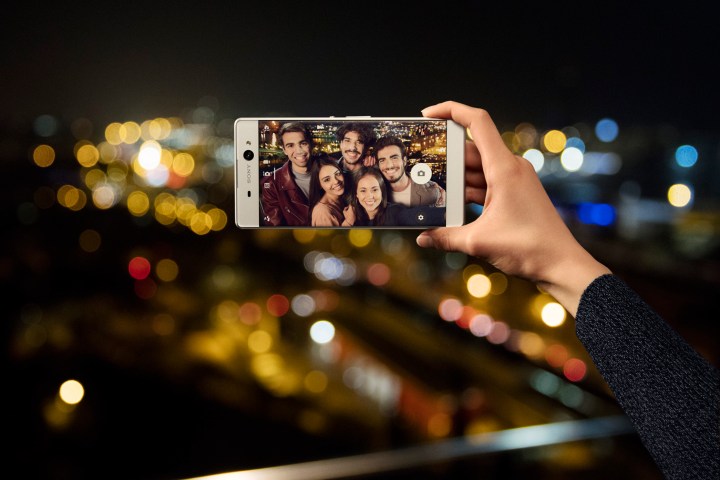
Design-wise, the Xperia XA Ultra is a larger version of the lower-tier Xperia XA. It has ridiculously small bezels, and the same button placement as the rest of the Xperia X series — the power button is on the bottom-right edge, and the volume rocker is on the center-right edge. The Ultra has a curved glass display, which makes it stand out from the rest of the Xperia X series.

A 6-inch screen classifies the XA Ultra as a phablet, but even though it’s the largest of the X lineup, the resolution remains the same as the other higher-end models at 1080p.
The device is being touted for its selfie-camera capabilities more than anything else — it has a 16-megapixel front-facing camera, and a 21.5-megapixel rear one. The front camera is supported with Sony’s low-light sensor to improve the exposure in dark environments, and it also utilizes optical image stabilization for photos and videos to minimize hand shake.
The front camera has an 88-degree wide-angle lens with an aperture of f./2.6, and also features “Hand Shutter,” which allows you to take a shot just by raising your hand. The shutter timer will start a count down, giving you a moment to strike the right facial expression. You can also use the front-facing flash for additional lighting.
The rear camera has an aperture of f./2.4, and it doesn’t seem to have the same OIS capabilities as the front-facing camera. It uses “Hybrid Autofocus,” and has a quick launch and capture feature — meaning you can go from standby to snapping a shot in “a fraction of a second.”

The front-facing camera certainly sounds better than what the current flagship model, the Xperia X Performance, offers — a 13-megapixel camera. The rear on the Performance, on the other hand, has 23-megapixels. Megapixels aren’t what makes a good camera though, so we’ll have to test out these devices when they’re released to see how well they fare.
The phone is powered by a MediaTek MT6755 processor, and has 3GB of RAM. The company says users can expect two days of battery life on a single charge thanks to a 2,700mAh battery capacity. Take that with a grain of salt, as companies typically overestimate how long a device will last for average users.
Running on Android Marshmallow, the device will come with 16GB of internal storage, but you can throw in a MicroSD card with up to 200GB of capacity.
The XA Ultra works with Sony’s Quick Charger UCH12, which supports Qualcomm’s Quick Charge 3.0 and can reportedly supply 5.5 hours of battery life within only 10 minutes of charging. However, Sony has opted for a standard micro-USB port for charging, rather than USB Type-C.
The Quick Charger UCH12 is only offered as a separate accessory to the device, though. On the topic of accessories — Sony will offer various covers for the XA Ultra to add style and protection, including the Style Cover Flip, which turns the screen on or off when you open and close the case.
For a quick recap, the Xperia X lineup includes: the Xperia X Performance, the flagship model; the Xperia X; and the Xperia XA, a budget device with low specs. There have been rumors of another device, the Xperia X Premium, which would make it the fifth device in the X series after the XA Ultra.
The Xperia XA Ultra will be available in black, white, or lime gold beginning in July in “selected markets,” which includes the U.S. More details on the release date of the entire Xperia lineup, including pricing, will be announced on May 31.


